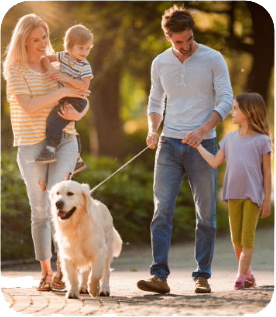3 Reasons for Challenging Behaviors
Three Reasons For Challenging Behavior
Our furry friends are always communicating with us. By the way that they respond to us, and to their environment, they are always telling us what’s going on, whether it is through shyness, fear, insecurity, confusion, uncertainty, curiosity, defensiveness, protection, or control (the list is endless). By paying close attention to their responses, we can figure out what our dogs are telling us, and work to resolve the challenges they are struggling with. Overtime I have learned that challenging behaviors can be broken down into three distinct areas; Relationship issues, Communication issues, and Focus issues.
Relationship Issues:
Relationship issues usually arise when we, as owners, lack a strong, consistent leadership role with them. This happens when it comes to setting, and maintaining, boundaries with our pups. Remember, dogs are opportunists, they get away with what they can, when they can, BECAUSE they can. Our dogs respond the way they do because it works for them. When our dog doesn’t perceive us as a strong, consistent, leader, they see no reason to work for us. This is evident in how they disregard our direction altogether, or in the way they are more obedient with one family member over another. Not to fret! Here are some specific things we can do to reinforce our leadership role with them:
- Feeding Time: Leaders eat first, while pups are on their “place.” When it is their turn, pups wait in a proper sit before going to their food bowl.
- Thresh holds: Leaders go out first; pups sit before and after going through a door. Doing so will teach your pup to respect space and boundaries.
- Games: The leader initiates all puppy games, and in the end, the leader wins all puppy games (fetch, tug, etc…). While playing, you want to let your dog “win” occasionally, it helps to boost their confidence; however, when the play session is over, the leader always walks away with the toy.
- Follow-Through: When you give a direction, and instead your dog walks away, turns their back to you, or just does not respond, FOLLOW THROUGH. NEVER let your dog disregard you. Following through means interrupting their bad behavior and reinforcing an alternative one, until they succeed.
- Challenging Them: When practicing their obedience, we only maintain a bare minimum, low level working style; sticking to the things we know are easy for them. For example, if we know they are more reactive with other dogs in public, or that they struggle with their “place” command during certain distractions, we opt out by avoiding it altogether, or leaving the hard work for someone else. By facing the hard stuff, we are telling them we believe in them, and stretch their ability to cope with stress.
Communication Issues:
Communication issues boil down to our pups not understanding what we are asking them to do. In this situation, they haven’t yet associated the verbal command with the behavior through repetition and consistency. A clear language hasn’t been established, and they genuinely don’t know what to do. There is no magic to this. It comes down to doing the groundwork, to setting an obedience foundation, with each command, with each behavior. This is done with patience, by showing your dog what to do through repetition and reward, over and over, until they demonstrate that they understand what you are asking them to do.
Focus Issues:
Focus issues happen when our dogs are overly focused on the wrong things-external distractions-and not focused on the right things-us. Even a dog with great obedience skills can struggle with a focus problem. Focus problems develop into fixation. When a dog is fixating, all obedience goes out the window! Fixation is an unhealthy state of mind because it drives our dog’s stimulation level into a high drive of anxiety and/or aggression, to the point where all other senses shut off almost completely. The e-collar, used correctly, becomes the most effective tool in resolving this issue. As we have learned, it allows us to communicate to our pup neurologically, breaking through the barrier and interrupting the state of chaos. During that precious, short window of opportunity, we are able to re-direct their attention away from the obsession to us. Timing is everything in this moment. With enough repetition of this, we are able to lead our dog into a healthy state of calm.
- Tara Perry, Certified Canine Handler



